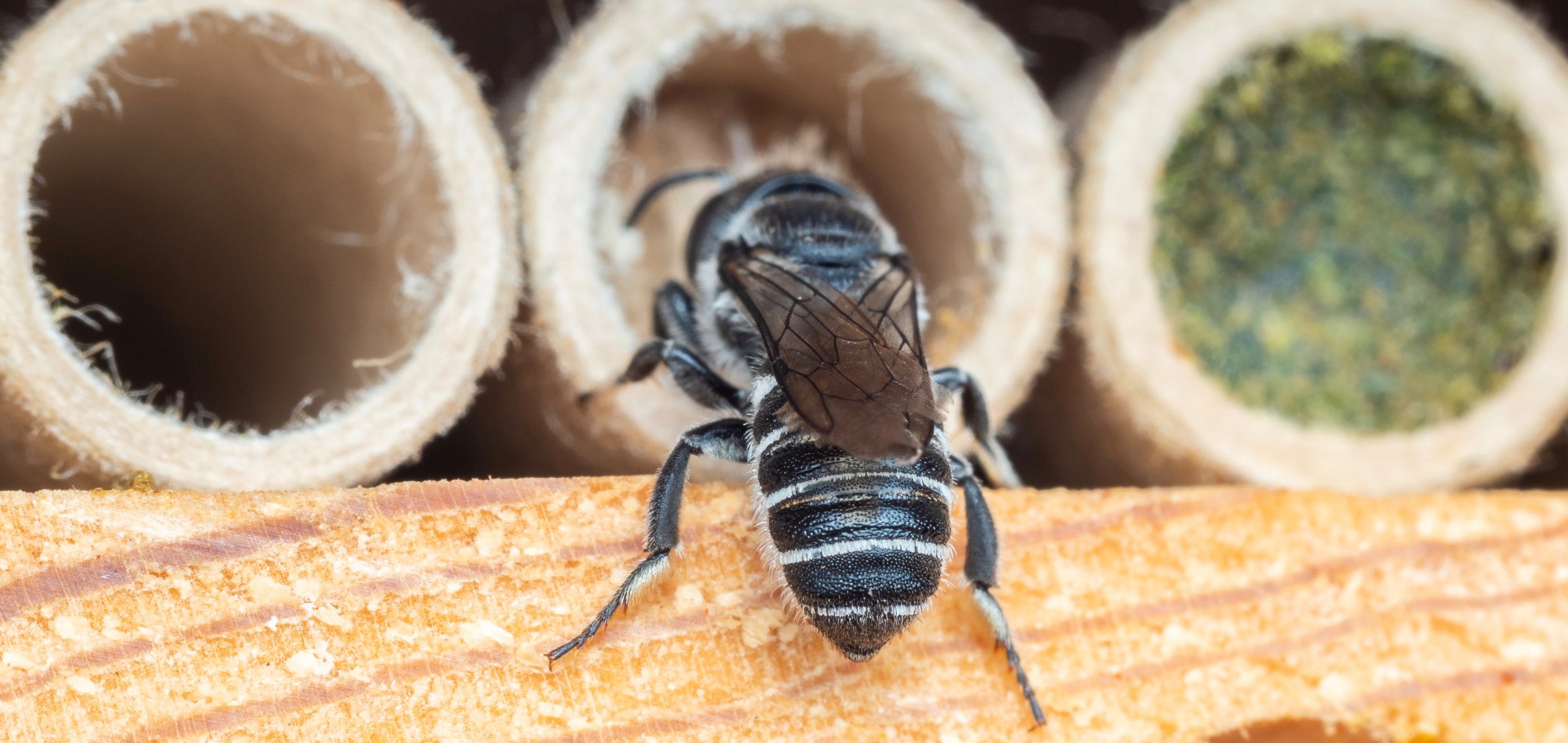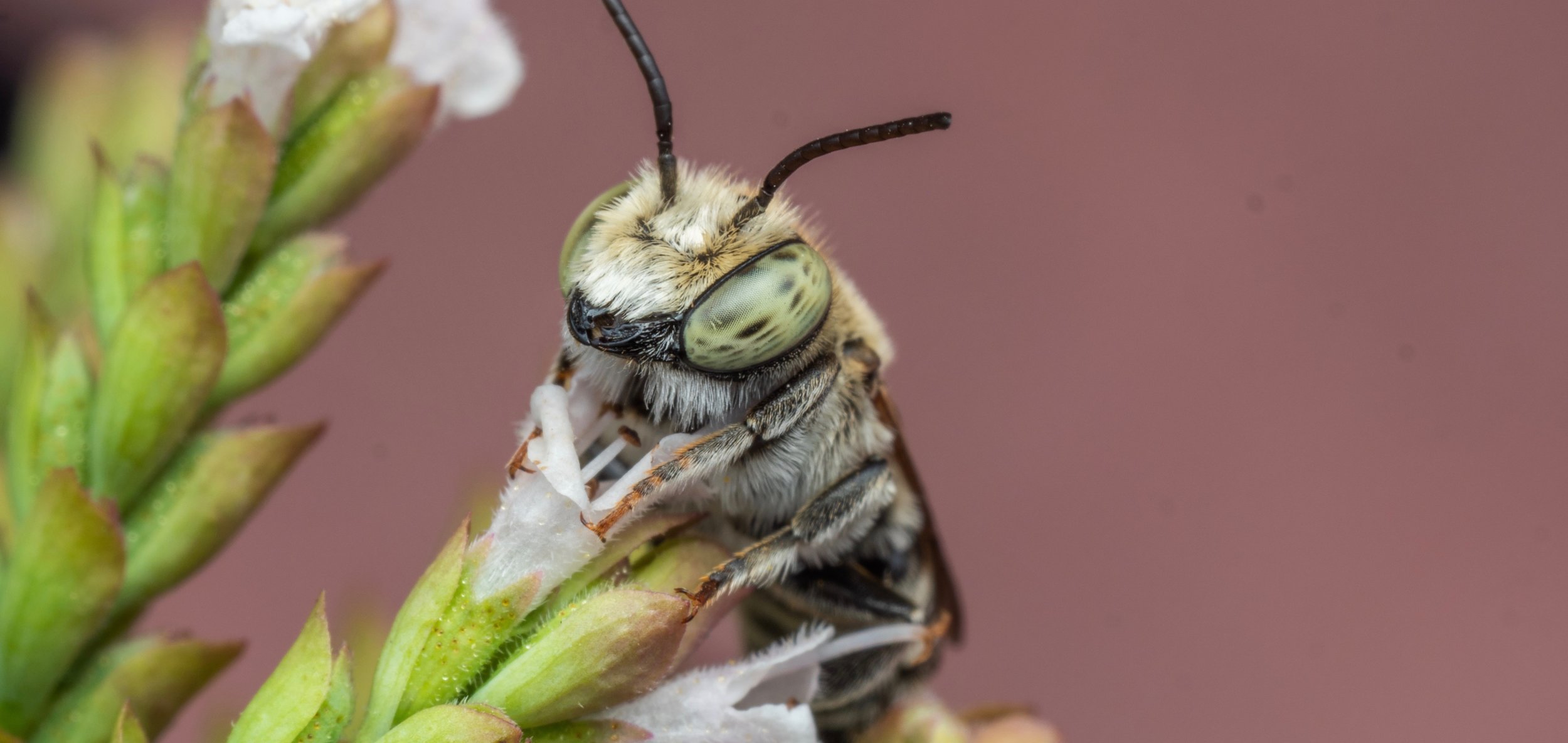Scientific Name: Megachile rotundata
Common Name: Alfalfa Leafcutter Bee
Family: Megachilidae
Species Range: Introduced European species that is now common across North America
Identification Tips: Female alfalfa leafcutter bees are mostly black, and are fairly smooth when viewed from above. The have slightly pointed abdomens and carry pollen on special velcro-like hairs under their abdomen (called scopa).
The males are lighter in color and slightly fuzzier with more prominent striping on their rounded abdomens. They also have strikingly green-tinted eyes!

Nesting Habits: M. rotundata are solitary, tunnel-nesting bees that will reuse holes drilled by other insects or animals, as well as hollow reeds and flower stems to make their nest cavities. Humans can provide nesting sites via cardboard tubes, natural reeds, or wooden nesting trays (similar to mason bees). These little bees prefer holes with a 6mm diameter! Here is more information on creating habitats for tunnel-nesting bees.
Once the female has picked a nest site, she will begin foraging for provisions and will lay six to twelve eggs. Each egg cell is lined with and partitioned off by leaf and petal fragments cut with massive mandibles and held together with saliva. The larvae will eat pollen provisions left by their mother and will develop throughout the rest of the warm season.
These bees can produce two generations in the summer. The first is a much shorter-lived cycle in early summer that produces more males (unfertilized eggs) than females (fertilized eggs). The second generation emerges in mid to late summer. Right before pupation, these bees enter diapause (a kind of hibernation) as they wait out winter. In spring, they will continue their development and pupate before emerging in early summer.
These bees are used for commercial pollination and can be managed on a large scale. This often involves large artificial nest sites, pre-pupal removal, and incubation to correspond with blooming periods of crops.
Preferred Forage: Clovers, legumes, rapeseed, and… alfalfa, of course!
Active Season: June through September in northern states, with longer active seasons in the south.
Fun Fact: These bees were purposefully introduced by the federal government in the 1940s to increase pollination efforts of alfalfa and yield higher seed production. You can thank these bees for all the protein-rich alfalfa that we feed to dairy cattle for yummy foods like cheese and ice cream!

